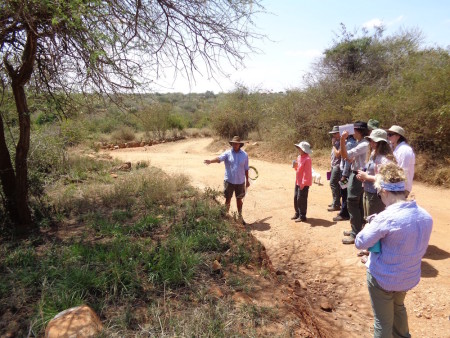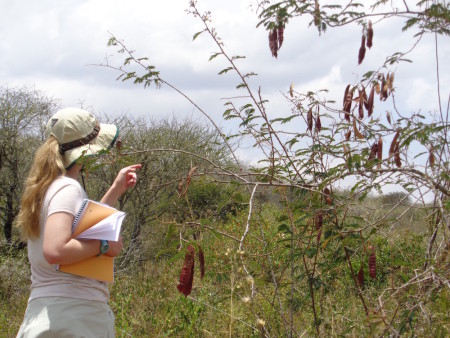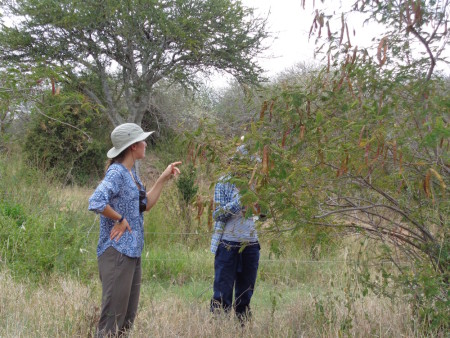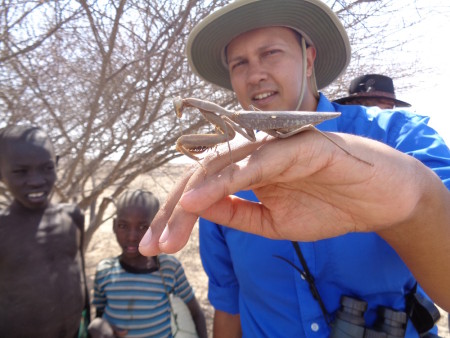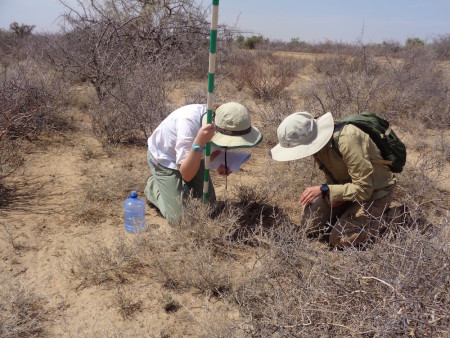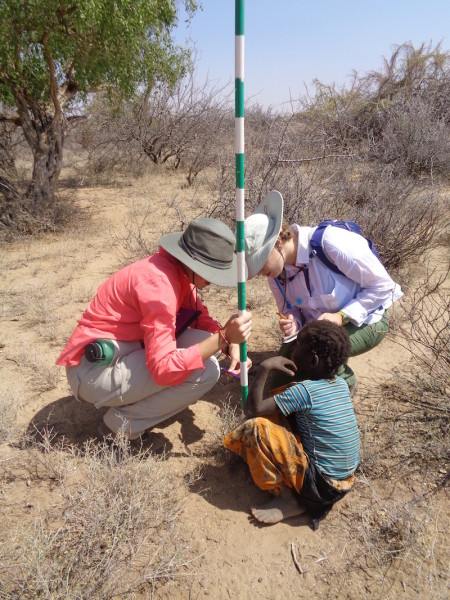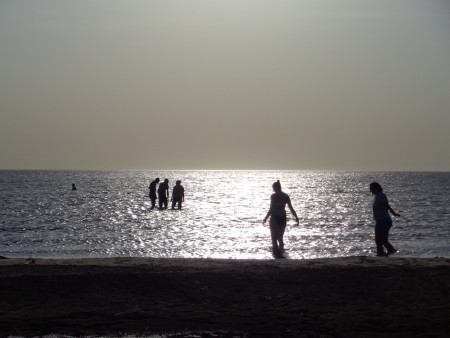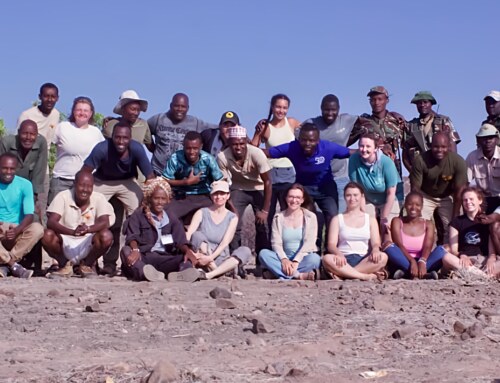While at Mpala, Dr. Martins took the students out into the field to learn about the different species of plants surrounding the area. Similar to the overall theme that Kimani introduced, Dr. Martins had the students work on a project that stressed the differences of vegetation inside and outside of the compound. The students conducted an experiment that consisted of counting the pods of a plant called Acacia brevispica. This species of plant is a significant resource to many grazers living around Laikipia.

Jon taking notes on A. brevispica. Note the very large pods.
Before breaking up into pairs and collecting data, Dr. Martins showed the students an experiment that researchers at Mpala Research Center have been conducting. It had fencing in two areas that were close in proximity in order to prevent certain animals from grazing in the enclosures. One was large fencing that, for the most part, kept out all animals. The other was a series of wooden pillars that really only prevented hippos from grazing in the enclosure. If one looked closely, there was elephant dung present in the enclosure so clearly these intelligent animals found a way to break in.

Enclosure that kept most animals out. Note the difference in vegetation when compared to directly outside of the fencing.

Hippos not allowed!
While the drastic contrast between the two enclosures was almost shocking to the students, it sent an important message of how much certain grazers affect the vegetation distribution. This was a great representation of what the students might find with their own experiments!
The students had to count the pods of 10 plants from inside of the compound and 10 from outside of the compound. These plants were selected at random in order to prevent any biases.

Carla counting pods outside of the compound

Tobias and Danielle deep in the brush!
Afterwards, we compiled all of the data into a mass database and compared the different densities of pods. Results showed how there were less pods on plants outside the compound versus inside the compound, largely due to a lack of grazing inside the compound. This was a critical learning activity because this is a common trend in vegetation studies. Additionally, it is especially prevalent in the area surrounding Ileret, where livestock makes up a massive portion of their livelihood.

Pod count of Acacia brevispica inside and outside of Mpala Research Center
When the students arrived at Ileret, Dr. Martins had them conduct a similar experiment in order to see the similarities in both regions. He began the day by introducing different vegetation throughout Ileret and what kind of animals are feeding on it. We were interrupted by a bark mantis, which landed on Carla’s bag. This was of much excitement to the students considering how large it was!

Dr. Martins teaching the students about Acacia reficiens

Barabara listens as Dr. Martins lectures!

Can you spot it??

The praying mantis loved Carla’s backpack!
After the praying mantis went on its way, the students were then instructed to collect data similar to what they did at Mpala. However, this time they were to record the number of pods as well as the height of a plant called Indigofera spinosa.

Indigofera spinosa
In order to have a random sample, students used the “spearing” method. This involved throwing the Jacob staff in a random direction, almost like a projectile spear. The students loved this and it made collecting data in the hot sun that much more enjoyable!

Yvette throwing the Jacob staff

When it lands…start counting!

Max and Jon taking measurements!
As the students worked hard collecting data, some of the local children came to help out! Kathryn quickly made friends and added a third member to her group.

Kathryn and her new friend!
After the data was all collected, we compiled it all into one spreadsheet and conducted different statistical analyses. The results of all the combined data showed that the overall height differences of the vegetation inside of the compound in comparison to outside of the compound was very different. Inside of the compound, Indigofera spinosa had a wider variation of heights, but on average was much taller. Whereas outside of the compound, Indigofera spinosa was much smaller due to the grazing of livestock. It was interesting to see this trend, considering that similar results were seen at Mpala.

Total data collected
When comparing the data by individual groups, there was more variation outside of the compound due to the selectivity of grazers. Inside the compound, the plants were still overall taller but there was less variation. This is because it does not have the effect of livestock randomly grazing. Once the students saw this, comparing it to their data from Mpala, it really demonstrated the true effects of grazers on the landscape.

Height comparison of Indigofera spinosa outside of Ileret compound. The x-axis represents height (cm) and the y-axis represents the pairings of students.

Height comparison of Indigofera spinosa inside of Ileret compound. The x-axis represents height (cm) and the y-axis represents the pairings of students.
After a long day in the sun, the students headed out to Lake Turkana where Dr. Martins taught the students about the different vegetation around the lake shorelines. After class, the students got to take a little dip as a reward of their hard work! Really pays to be living so close to a beautiful lake!

Students ready to head to Lake Turkana!

Dr. Martins pointing out the vegetation near the shorelines

